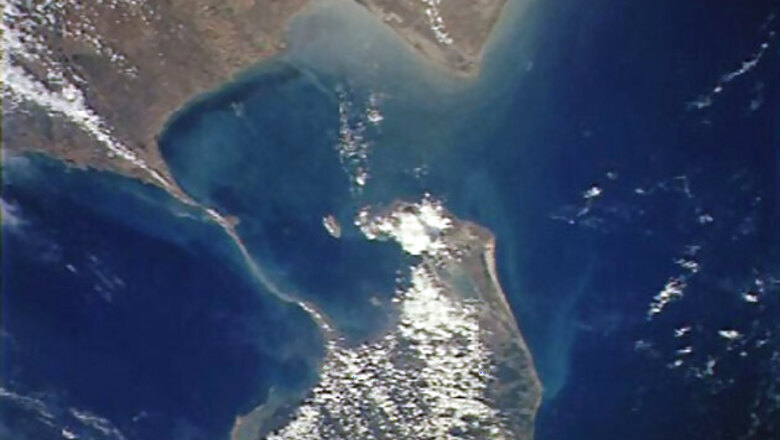
views
New Delhi: Ram Sethu, also known as Adam's Bridge, is a continuous stretch of limestone shoals that runs from Pamban Island near Rameshwaram in South India to Mannar Island off the northern coast of Sri Lanka. Encyclopaedia Britannica says that geological evidence suggests that in the Ice Age, the stretch used to be a land connection between India and Sri Lanka.
There are different geological theories behind the origin of the ridge, one of which even says that Sri Lanka was a part of Indian landmass and that the calcareous rectangular blocks are testimony of Lanka breaking away from the mainland about 1,25,000 years ago.
Hindu believers hold it as the structure that Lord Rama and his army of apes and monkeys built to reach demon king Ravana's Lanka.
The depth of the sea along the 30-km-long stretch varies between 3 feet and 30 feet, thus making navigation by sea-worthy vessels impossible in this stretch. Today, ships bound for India's eastern coast have to circle around the entire island of Sri Lanka to reach Tuticorin, Chennai, Vizag, Paradip and other ports.
Therefore, a project titled Sethusamudram Shipping Canal Project was mooted by the Government of India and a feasibility study ordered in the 1990s. In 1997, the Government decided to go ahead with the project but only finalised it in 2005. It calculated that successful completion of the project would cut travelling by about 350 nautical miles and will save 10 to 30 hours' sailing time. Plans were also drawn up to develop 13 minor ports in India, and fishing harbours and other infrastructure in both India and Sri Lanka.
The project involves creating a 83-km-long deepwater channel that will link Mannar with Palk Strait by extensive dredging and removal of the limestone shoals that constitute the Ram Sethu. New Delhi thinks it will bring down shipping costs and add to India's exchequer in the form of transit fees.
The project has been condemned and opposed by a wide spectrum of the Indian people. Religious right wing parties have come down on the plans to destroy something built by Lord Rama.
Environmentalists, many of them radical left, have opposed it as they hold it would destroy and destabilise the aquatic flora and fauna of the area.
There is another group which has criticised the project as economically unviable. They say while the canal will bring down sailing time for those ships which originate from Tuticorin or Kanyakumari by 10 to 30 hours, it will only lead to a 8-hour saving for those which originate in Europe, Africa or West Asia (these account for 65 per cent of ships sailing in these waters). Measured against the proposed tariff, they say, ships will lose more money by transiting through the canal. Lowering the tariff, they argue will make for miniscule return on investment (ROI), the levels of which are rejected even for public infrastructure projects.
Plus, they point out that only ships with tonnage up to 30,000 tonnes would be able to use the canal. Since most modern ships carry much higher loads, the project is doomed to fail, they feel.
Janata Party chief Subramaniam Swamy filed a petition in Supreme Court asking the Apex Court to order the government to declare Ram Sethu a national monument as it was a matter of faith. The government declined to take a stance on April 19 in court and the next hearing of the case is scheduled to be in the third week of August.




















Comments
0 comment